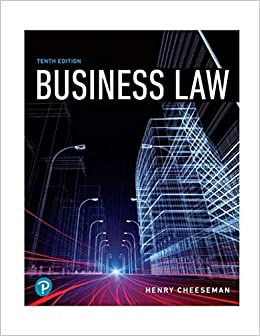





ch6
Question 1 (1 point) When the auditor receives the client-prepared schedules for property, plant, and equipment assets, in order to determine that they booked the adjustments proposed by the auditor at the conclusion of the prior audit, the auditor should 0 inquire of accounting personnel. 0 inquire of management. O examine the general journal for the rst month of the current year. 0 compare beginning balances with prior year's working papers. Question 1 (1 point) Which of the following audit procedures would be LEAST effective to establish the COM PLETENESS of trade accounts payable? 0 Request supplier statements from all significant vendors and reconcile to the year end AP balance. 0 Send out AP confirmation letters to all vendors with year end account balances greater than 50% of performance materiality. O Inquire with the purchasing manager to determine if there are any large purchases that have been received, but not yet invoiced by the supplier. O Vouch subsequent payments to AP vendors to supporting documents to determine if they relate to an amount outstanding at the year end date. Question 2 (1 point] The auditor's usual strategy in performing test counts during the inventory observation is to O randomly select all test items. 0 test all large-dollar items. 0 concentrate tests on high dollar items with random selection of other items. 0 concentrate tests in areas where employees seem to be disregarding the inventory instructions. Question 3 (1 point] Which of the following procedures would not be performed by an auditor attending the year end inventory count: 0 On a test basis, count stock on the warehouse floor and compare the quantities to the amount recorded on count sheets. 0 Require the client shut down all operations while the count is being performed. 0 Scan the warehouse for inventory that is damaged or not saleable. 0 Review the inventory count instructions provided to staff assigned to perform the inventory count. Question 4 (1 point) When reviewing accumulated depreciation, the auditor seeks evidence as to the reasonableness, consistency and accuracy of depreciation charges. The substantive procedures performed seek to provide evidence for which assertion? 0 rights and obligations O completeness O valuation O presentation Question 5 (1 point) In tracing opening inventory balances to working papers for the previous year, the auditor should make certain that any audit adjustments, agreed on in the previous year, were recorded. Question 3 (1 point) If an auditor wishes to select a random sample that is based upon a TER of 10%, the size of the sample to be selected will decrease as the estimate of the: 0 Expected population exception rate increases 0 Expected population exception rate decreases 0 Population size increases 0 Materiality increases Question 4 (1 point) Which of the following is not an advantage of non-statistical sampling? 0 It allows an auditor to measure sampling risk. 0 It is lower cost than statistical sampling. 0 It allows an auditor to select a sample that they believe is appropriate. 0 It requires less staff training. Question 5 (1 point) From prior experience, a public accountant is aware that cash disbursements contain a few unusually large disbursements. In using statistical sampling, the public accou ntant?s best course of action is to: O Increase the sample size to lessen the effect of the unusually large disbursements. 0 Eliminate any unusually large disbursements that appear in the sample. 0 Continue to draw new samples until no unusually large disbursements appear in the sample. 0 Stratify the cash disbursements population so that the unusually large disbursements are examined separately. Question 6 (1 point] Judgemental selection allows the auditor to apply their experience and professional judgment to identify specific items for audit verification. In the year end audit of Accounts Receivable, which of the following items would NOT be selected by the auditor for specific examination? 0 Current AR balances 0 Outstanding AR greater than 50% of specific materiality for AR. 0 AR from related parties 0 Accounts outstanding for more than 90 days. Question 7 (1 point] Which of the following best describes the concept of key item testing? 0 the selection of items that an auditor believes should be included in the sample for testing 0 the proportion of items tested that did not conform to the client's prescribed control procedure 0 focus is on selecting the largest transactions within a balance to obtain coverage of the total 0 the selection of items that are grouped together within the population of items available Question 6 (1 point) As existence of property, plant, and equipment is the key audit assertion, the auditor does not need to obtain evidence of sales, disposals, and trade-ins. Question 7 (1 point) Perpetual inventorv records need to be compared with actual inventory at regular intervals. Question 8 (1 point) The transactions relating to property, plant, and equipment are quite often few and each usually material. Question 9 (1 point) An inventory turnover analysis is useful to the auditor because it may detect: 0 The optimum automatic reorder points 0 Inadequacies in inventory pricing 0 The existence of obsolete merchandise 0 Methods of avoiding cyclical holding costs Question 10 (1 point) Reviewing data pertaining to inventory quality relates primarily to the O completeness assertion O occurrence assertion O valuation and allocation assertions 0 rights and obligation assertion























